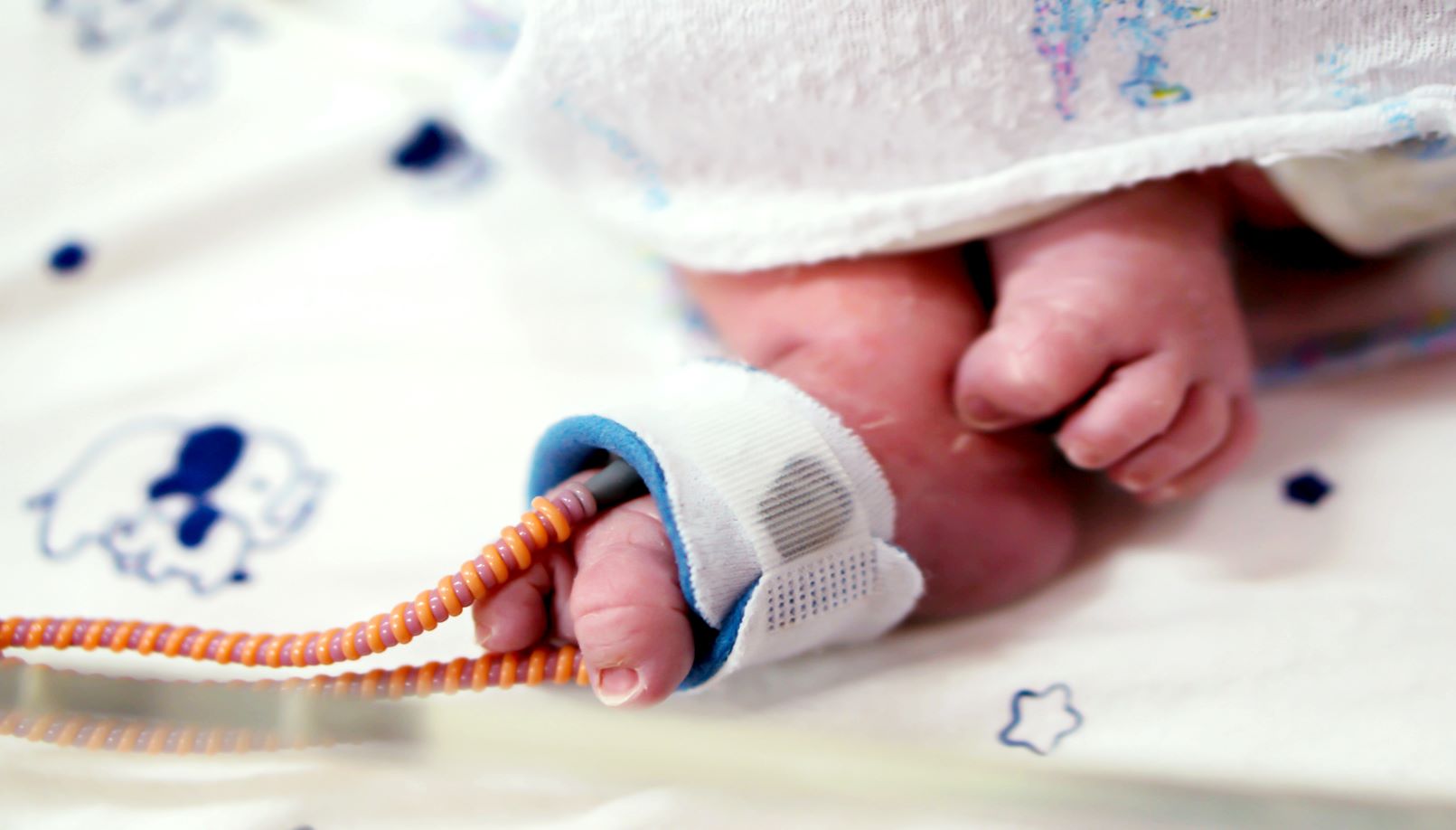
- 8 Aug, 2022
- /
- Category:
- Medical Device Fixation
Design Considerations for Adhesive Pulse Oximeters Blog
Pulse oximetry has modernized healthcare with its ability to monitor the oxygen saturation of hemoglobin in arterial blood in a continuous and non-invasive manner. In fact, pulse oximetry has become so prevalent that it is often considered a fifth vital sign in medical care.[1]
Pulse oximeters probe the finger, forehead, nose, or ear lobe because the skin in these areas has a higher vascular concentration than others, such as the skin of the chest wall. The two primary pulse oximeter probe types are reusable clip probes (used on the finger, nose, and ear) and single-patient adhesive probes (used on the finger, forehead).
The advantages of single-patient adhesive probes include less transmission of nosocomial infection, more secure placement in situations of increased patient movement, and the ability to monitor locations other than the acral areas because they are more susceptible to vasoconstriction.
Optimizing Medical Grade Adhesive Formulations for Single-Patient Pulse Oximeters
There are numerous product design considerations for OEMs creating single-patient adhesive pulse oximetry devices. One of the most critical aspects is selecting the optimal adhesive formulation for the design because the adhesive is what enables the sensor to be securely placed on the body, which is essential for an accurate reading of a patient's oxygen level. Due to the technically complex nature of identifying the proper adhesive formulation, specialized contract development and manufacturing organizations (CDMOs) often perform this part of the sensor design.
Many skin-safe options are available; however, there are important considerations in determining the specific adhesive formulation for each unique single-patient pulse oximetry product. These include the overall design of the device, placement of the pulse oximeter, and required adhesion properties, e.g., if it is meant to be repositionable or if a strong adhesive is needed for areas of frequent movement. This article will focus on two of the primary formulations utilized in single-patient pulse oximetry adhesives, which are acrylics, and silicones, to illustrate some of these considerations.
Acrylics, solvent and water-based, are widely used in the healthcare market for applications such as general consumer dressings, advanced wound care dressings, ostomy applications, and medical device fixation. Acrylics exhibit strong adhesion to the skin to provide a long, active wear time. They also can possess a wide range of mechanical strength and elastic properties. An acrylic adhesive is typically used for single-patient pulse oximetry if the device needs to stay on for several days.
However, specific applications for populations such as neonatal, geriatrics, and patients in intensive care units require a low-trauma adhesive. Silicone-based skin adhesives are typically the formulation of choice for more delicate skin adhesive applications as they provide a unique balance of adhesion, comfort, and conformability. A silicone gel-based adhesive can be affixed directly to sensitive skin and repositioned or removed as needed without causing trauma or leaving residue. It should have elasticity, conform comfortably to the body, and provide a secure fit.
Improving the Manufacturability of Adhesive Pulse Oximeters
Beyond the adhesive, there are many things an experienced CDMO partner can incorporate into a design to make the manufacturability and assembly of the finished single-patient pulse oximeter device more efficient for OEMs. This includes adding accessory parts and layers that reduce complexity, the management of multiple SKUs, and assembly time while speeding time to market.
For example, single-patient pulse oximetry devices typically have numerous layers of adhesive; there is the skin contact adhesive, but there is also an adhesive that holds the electronic part of the finished device. Industry-leading CDMO partners can incorporate all those layers into one part, saving OEMs from having to manage multiple separate products that typically must be placed together manually. Additional features can be incorporated including adding accessory parts such as tabs for easy exposure of adhesive and printing on the product or release liner.
A turnkey solution such as this creates more value. Therefore, OEMs should assess capabilities like adhesive formulations, converting, printing, design, and packaging when evaluating potential single-patient pulse oximetry development partners. The partner should also have deep experience in making components for adhesive pulse oximetry applications to help solve potential problems faster and make products easier for assembly.
Scapa Healthcare is a trusted, strategic partner of choice for contract manufacturing in the development of custom medical-grade adhesive solutions. We have the team of experts and innovative adhesive formulation and product development capabilities to successfully partner with single-patient pulse oximetry device OEMs. Scapa also offers value-added services such as printing, which can be applied to creating unique designs and/or functional printing to aid with the registration during the converting and assembly of a device. Contact us at healthcare@scapa.com.
[1] “Pulse oximetry: Understanding its basic principles facilitates appreciation of its limitations,” Edward D.Chan, Michael M.Chan, Respiratory Medicine, Volume 107, Issue 6, June 2013, Pages 789-799
